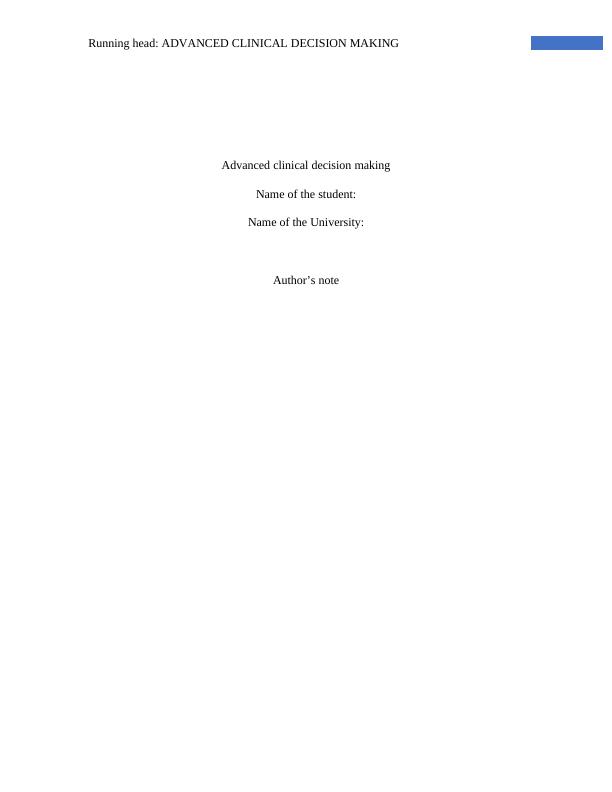Author's note: Critical reflection in clinical decision making
10 Pages2825 Words490 Views
Added on 2021-04-17
About This Document
Clinical judgment and decision making is a necessary component on nursing practice and use of tools like the clinical reasoning cycle guides the nurse to systematically process and interpret patient’s information for planning and delivery of care (Kuiper, Pesut & Arms, 2016). Clinical reasoning cycle: Consider the patient situation In the first stage of the clinical reasoning cycle I start to be able to know about the patient situation, patient information, and the chief complaint then start to think about it. are oral temperature 36.8
Author's note: Critical reflection in clinical decision making
Added on 2021-04-17
ShareRelated Documents
End of preview
Want to access all the pages? Upload your documents or become a member.
Clinical Reasoning Cycle for Mr. Cyril Smith
|5
|1674
|53
Clinical Reasoning Cycle for Hypovolemia, Dehydration and Hypotension
|6
|1448
|220
Clinical Reasoning Cycle for Mr. Cyril Smith's Case Study
|10
|1593
|188
Acute Pyelonephritis and Diabetes Mellitus: A Case Study
|10
|3014
|67
Mr. Fraser Case Study: Nursing Assessment and Interventions
|6
|1374
|91
International Journal of Health Policy and Management
|4
|1766
|28



